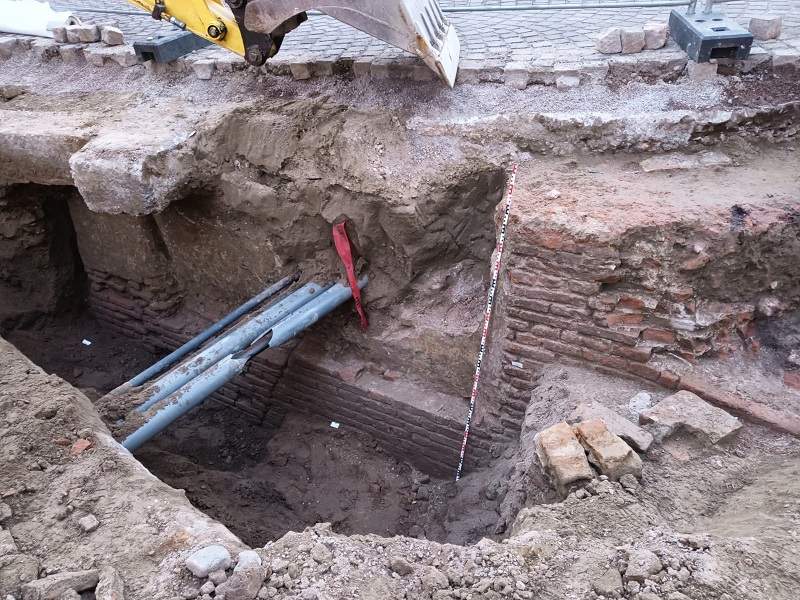More surprises from the archaeological excavation in front of Ferrara’s Castello Estense, which had already brought out much in recent months: a section of the medieval walls, the base of the ancient northern entrance to the castle, the remains of the 18th-century oratory of San Bernardino da Feltre. Now, from the latest tranche of work that will lead to the repaving of the square in front of the Estense Castle, portions of the ancient walls emerge that “close the circle” on the perimeter of the fortifications from the, likely medieval, period.
The in-depth archaeological investigation is underway and is being overseen by professionals from Phoenix archeologia (contracted by the Municipality), coordinated by Chiara Guarnieri, archaeologist in charge for the Municipality of Ferrara, and will result, together with the other discoveries and new elements collected during the work, in elaborate papers available to schools, citizens and researchers.
“This last portion of the excavation has lived up to expectations,” Guarnieri said. “In fact, we managed to connect the elements acquired with those that emerged during the last on-site works, which date back to 2010, also putting into system the data collected in the previous tranches of interventions. The latest survey, in particular, has allowed us to shed light on a section of masonry that connects with that located at the end of Corso Martiri della Libertà, and already emerged in previous excavations, pertaining to the rampart of the walls and the Porta dei Leoni. With this operation we are thus able to hypothesize the historical forms of the structures that were present in the area, which can be traced back to medieval times.”
The excavation has been secured, surveys have been carried out, a photographic map acquired, and the new subgrade layer on which new porphyry cubes, larger in size than the previous ones, will be laid to improve the performance of the road and absorb heavy traffic, is currently underway. At the end of this phase, carried out by hand-laying, a special coarse-grained gravel of the same material will be laid between the porphyry joints, then a Mapestone joint resin: a polyurethane binder for sealing that gives stability, elasticity and drainage capacity to the new pavement.
 |
| Ferrara, another portion of medieval walls resurfaces from the excavation of the Estense Castle |
Warning: the translation into English of the original Italian article was created using automatic tools. We undertake to review all articles, but we do not guarantee the total absence of inaccuracies in the translation due to the program. You can find the original by clicking on the ITA button. If you find any mistake,please contact us.